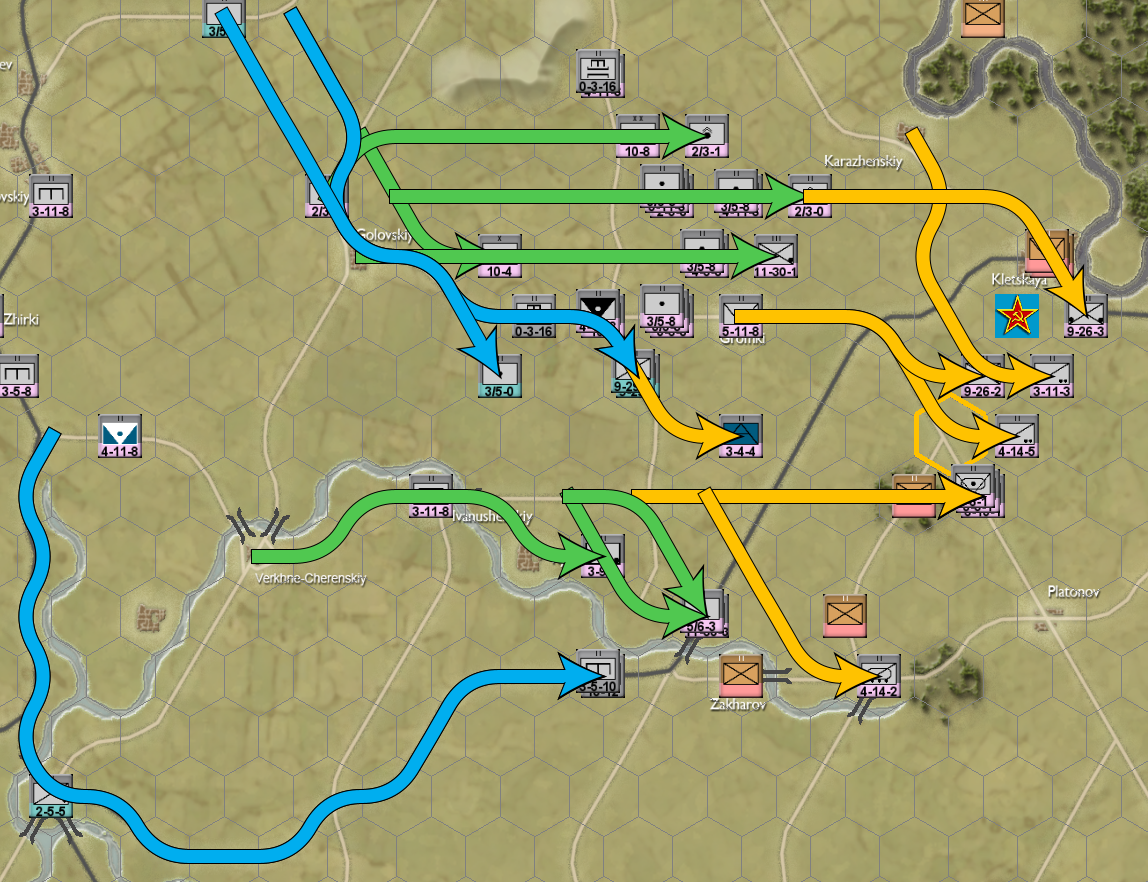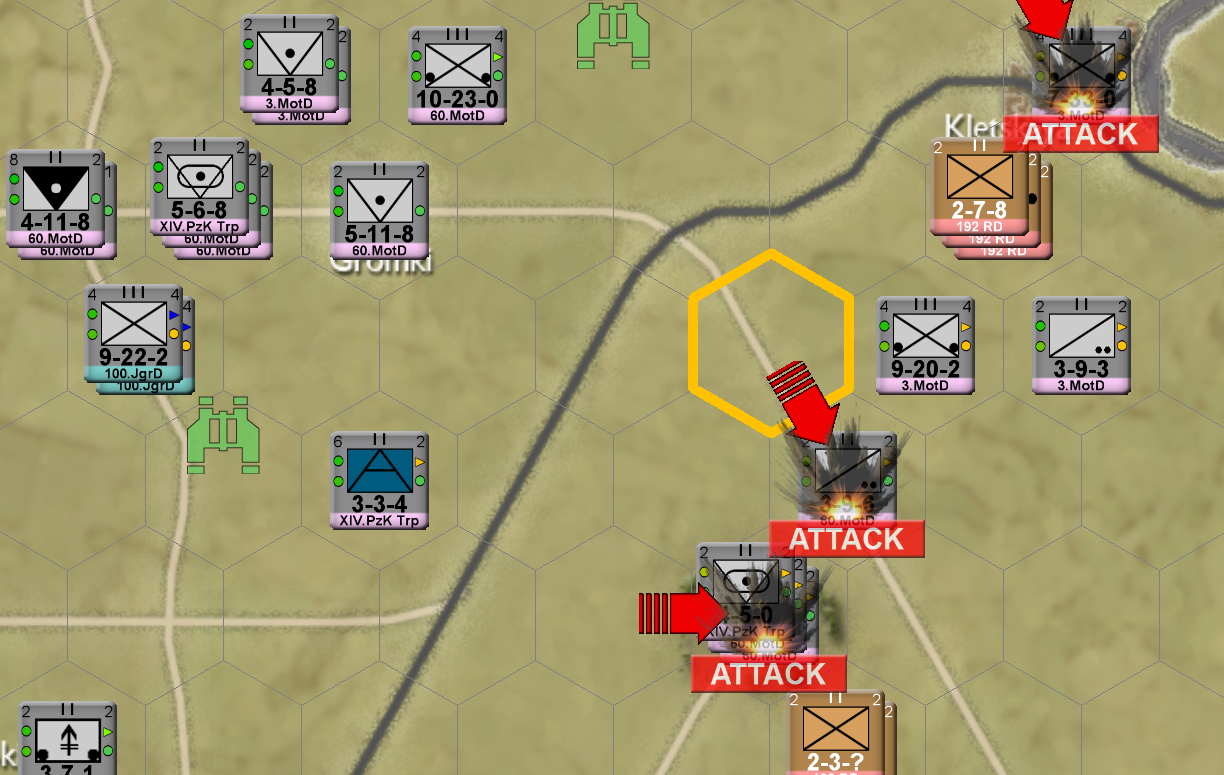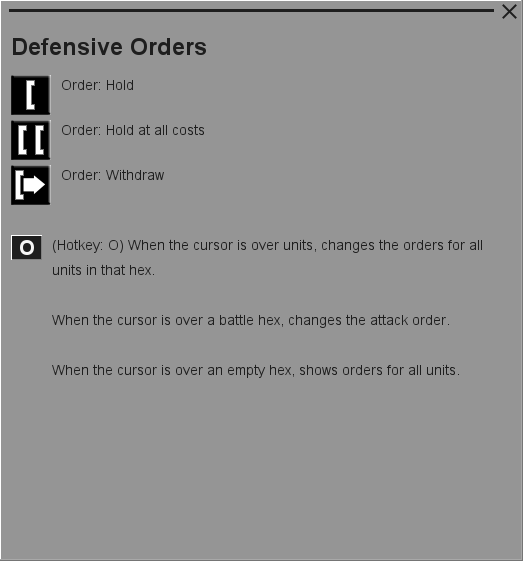Game Basics
I’m Brian Kelly and together with John Duquette, we have developed a new WEGO WWII: Stalingrad wargame. This Dev Diary is a short introduction to the game and will be followed by further diaries exploring different aspects of the game.
WEGO WWII: Stalingrad is a hex-based WEGO wargame of the German Sixth Army’s assault on Stalingrad–from the start of Operation Heron in July 1942 to the fighting in the city in November.
In many board and computer wargames, one side will move its units and resolve combat, followed by the other side repeating the process. This game mechanic is known as IGOUGO ("I GO YOU GO"). WEGO WWII: Stalingrad is different—it is a WEGO computer wargame.
In a WEGO game, both players plan their moves separately, and then both plans are resolved simultaneously by the computer. So unlike an IGOUGO game, one player does not know what the other is going to do before he makes his moves. When combined with the limited information available when Fog of War is turned on, the game rewards the Player's ability to manage chaos; to anticipate an enemy’s moves and plan for them without being able to instantly react.
So how does this work?
In the game, you can move your units by dragging and dropping the counters on the map. Stacks can be moved by clicking on a hex (or pressing the F key) and dragging and dropping the stack.
There are three different types of moves:


Pressing SHIFT-M will show all planned moves.
There are also several different Battle Types:
Planned Attack - this is an attack against adjacent units, in which you can add artillery, Air Support, and Command support to increase the odds. As a Planned Attack, you know the odds upfront (or an estimate of the odds if Fog Of War is on). To order this, simply drag and drop units onto adjacent enemy units.
Ad-hoc Attacks - These are battles that can occur during movement, depending on the move type. They are unplanned and will occur when units try to move into an enemy hex. As such, they are unpredictable, for the enemy can also move during execution - withdrawing or reinforcing positions, and your own units may get delayed due to Command and Control penalties. These battles do not have attacker Artillery/Air/Command support. However, if the defender is not moving, then assigned defensive support is available.
There are several types of Ad-Hoc Attacks:
-
Meeting Engagement - Battle that occurs when both sides are moving. There are no terrain benefits to either side, and the unit quality bonus is doubled - Higher quality units are more capable of dealing with the chaos of a meeting engagement
-
Ambushes - Units moving by Road Movement move adjacent to enemy units. The moving units immediately stop, and the enemy attacks the moving units while suffering no defensive fire.
-
Overruns - units move over an enemy when they have more than 10:1 odds. The enemy units are all destroyed, and the attackers can continue moving.

Attacks during turn execution
Fog Of War plays a major role in WEGO games. Here’s why; when planning moves, you could accidentally encounter enemy units that are also moving, or if you have low intel on an area, you may underestimate enemy forces causing your attacks to run into stronger enemy counter attacks. All units have an Intel Range (the distance a unit can ‘see’), and an Intel Strength (the level of Intel gathered), and you can use Air Recon and Intel Assets (such as Radio Intercepts) to discover what’s on ‘the other side of the hill’. And there are Recce units. In other games, Recce units are nothing more than light infantry, but in WEGO WWII: Stalingrad they are key to success. A recce unit’s primary function is to gain battlefield intelligence; to observe and report on the strength, activity, location and disposition of enemy forces. Recce units have stronger Intel Range (the distance a unit can ‘see’), and Intel Strength (the level of Intel gathered) and being very mobile, and also have the unique ability to automatically withdraw from enemy contact before any battle.


Right Click on a unit to see its details. There are many icons on the detail screen and you can find out more information by moving the cursor over the icons. E.g. The icon that looks like a square left bracket on the right of the counter is the Defensive Orders and moving the cursor over that icon reveals more information (image on the right). Note also the buttons at the bottom of the Unit Details. The ‘i’ above the button gives more information about the button’s action.
WEGO WWII: Stalingrad has been a huge undertaking. It has taken us four long years to create. Taking the WEGO game engine from a corps-level game based in North Africa–to a multiple army-level game based in the Eastern Front was very challenging. Hundreds of design decisions have been made along the way to keep the game approachable and immersive. Lots of fine-tuning along the way but we think we’ve hit the right chords.











